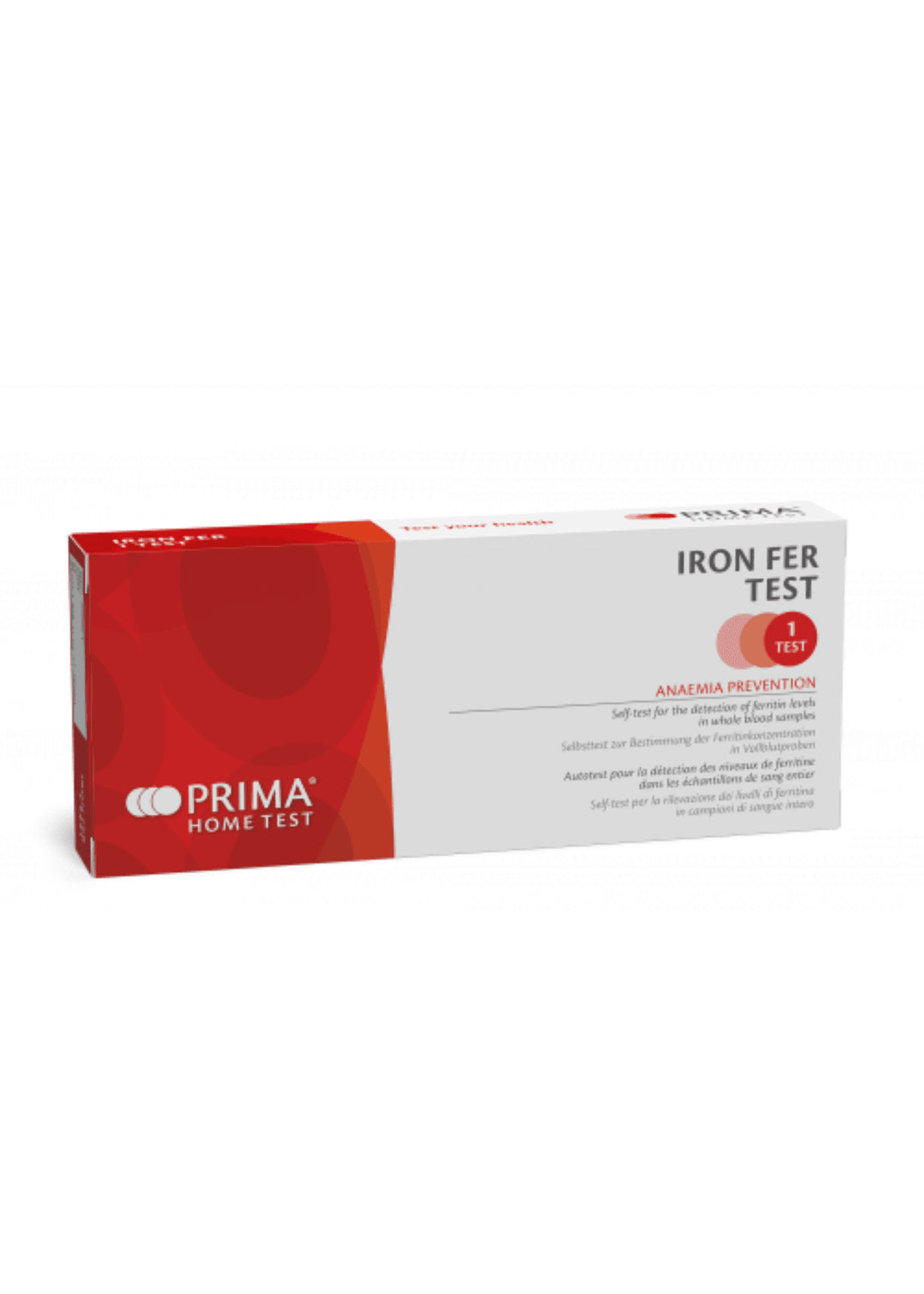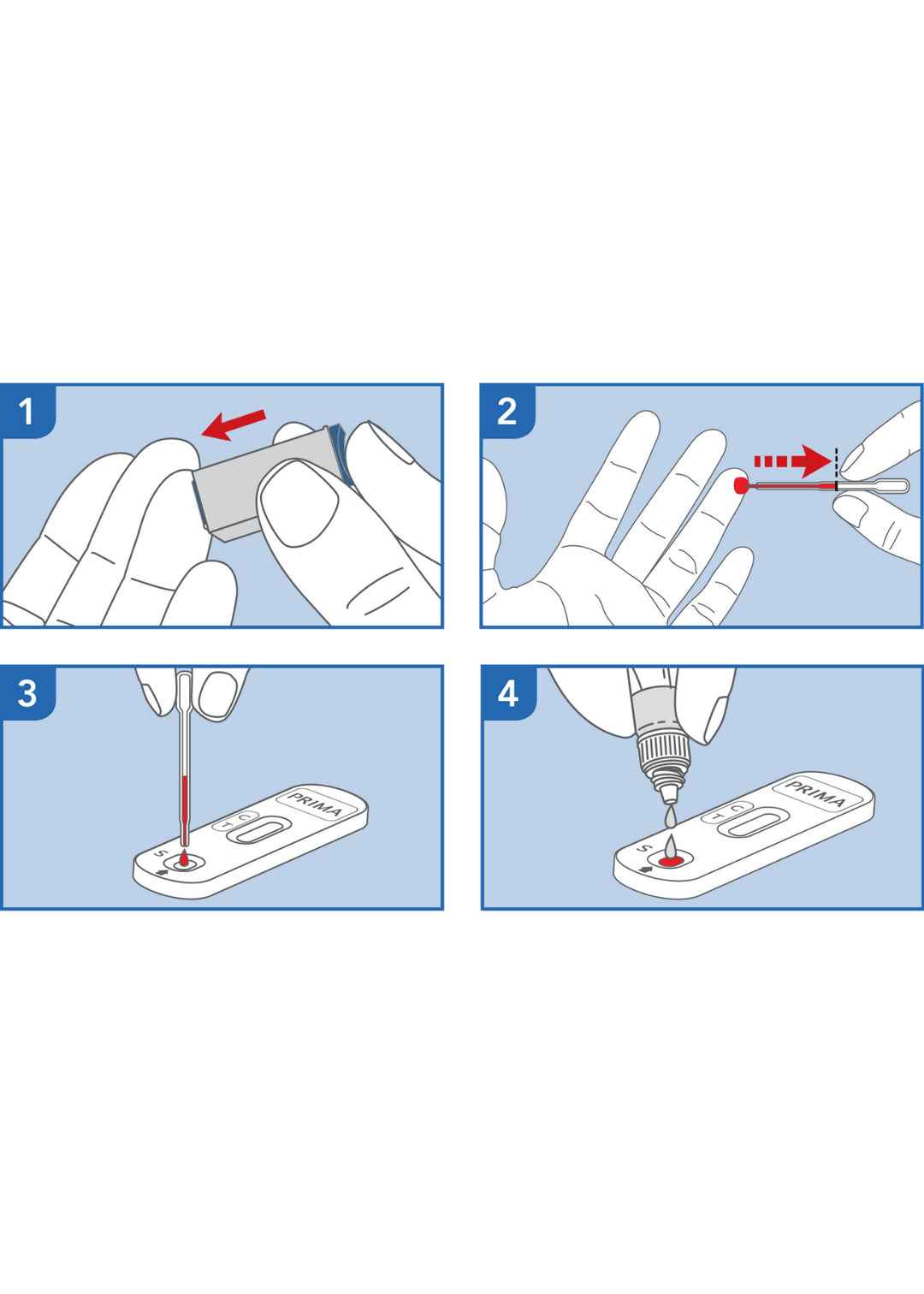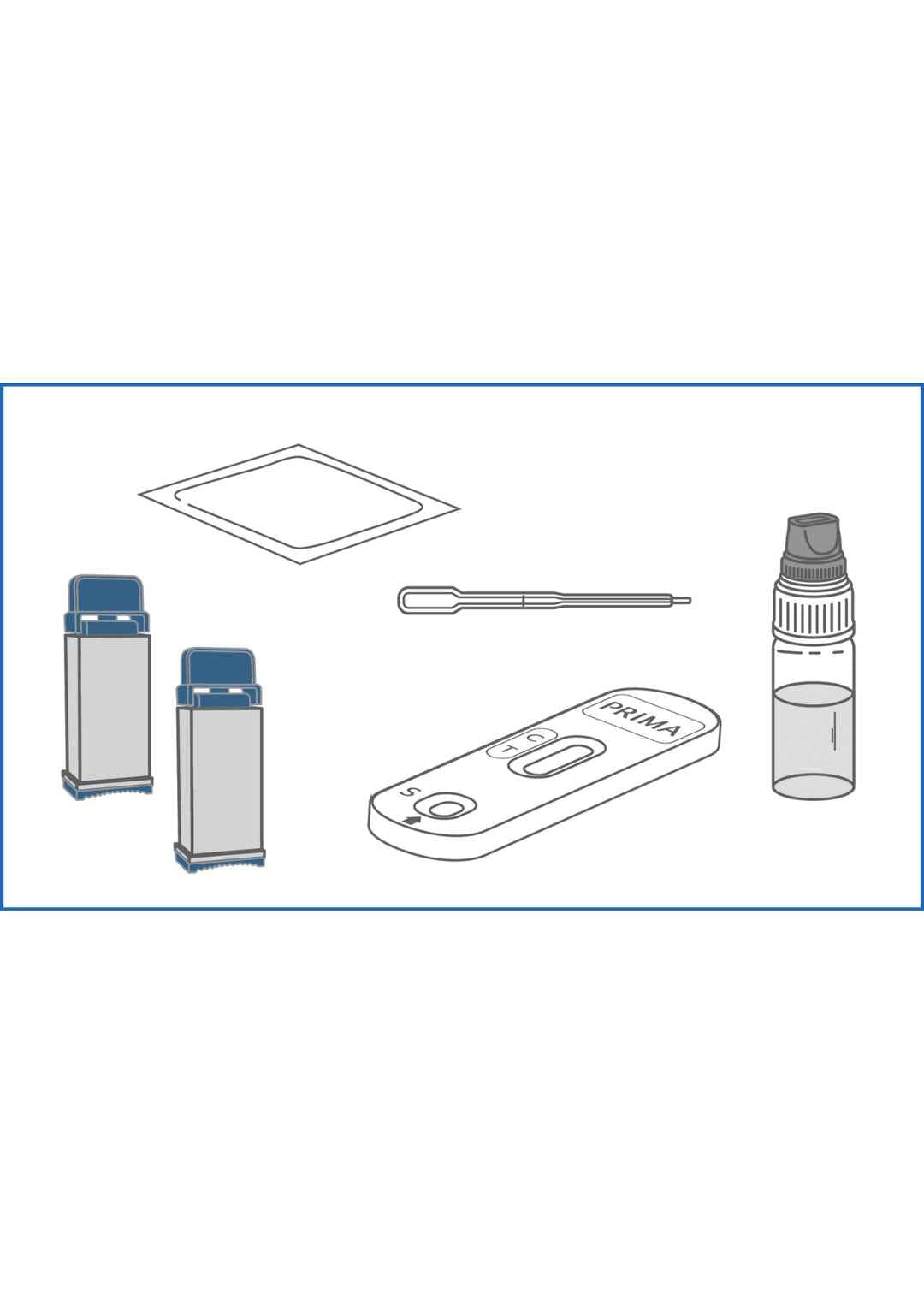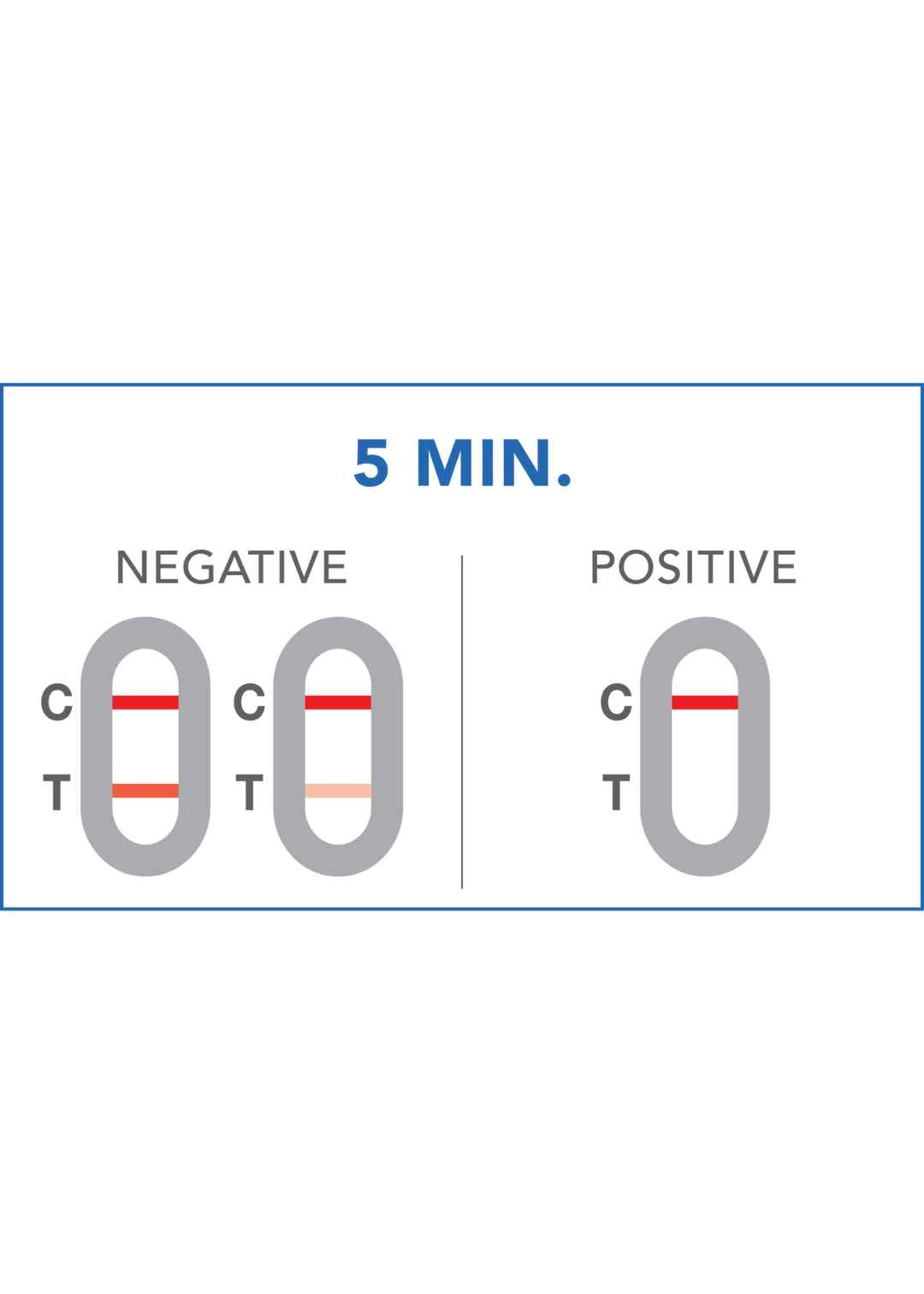PRIMA Iron FER Home Test
Self-test for the detection of ferritin levels in whole blood samples
Contents: 1 test
IRON AND FERRITIN RESERVES
Ferritin is the protein used to store iron in the body: The dosage of this protein is an excellent indicator of the amount of iron available.
Iron is an essential trace element for our body and it is indispensable for the transport of oxygen in the blood, for cell reproduction and for the development of tissues and organs. However, it is toxic in excess: for this reason, our body has a system to import iron from outside and store it in the cells in a non-excessive form - and therefore non-toxic. Low ferritin levels in the blood indicate the absence of iron in the deposits, a condition that precedes the development of anaemia.
WHO IS THE TEST AIMED AT?
IRON FER TEST is useful for checking the body's iron reserves.
A decrease in blood ferritin levels can be caused by conditions and diseases such as anaemia, pregnancy, bleeding, impaired iron absorption and tuberculosis.
TECHNICAL DATA
IRON FER TEST is an immunochromatographic device that detects ferritin levels in the blood below the limit of 30 ng/mL.
Specificity 100%
Sensitivity 85.2%
Accuracy 96.6%
CONTENTS
- 1 test cassette
- 1 dropper bottle with the diluent
- 2 sterile lancets
- 1 pipette for blood collection
- 1 antiseptic cleaning gauze
- Instructions for use
USE
1. take a blood sample with the sterile lancet provided;
2. collect the sample marked by the black line using the capillary pipette provided;
3. place the collected sample in the well (S) indicated on the cassette;
4. add 2 drops of diluent and wait 5 minutes to read the result.
INTERPRETATION OF THE RESULTS
Negative:
The ferritin level in the blood is above 30 ng/mL. The cases in which the ferritin concentration is just below this value (27 ng/mL-29 ng/mL) can lead to a similar result.
Positive:
The ferritin level in the blood is lower than the limit. It is necessary to check with your doctor.
Q&A:
What happens if the times for reading the results are not observed?
The test has been performed correctly if the instructions for use have been followed, including the reading time and interpretation of the results indicated in the ‘INTERPRETATION OF RESULTS’ section of the instructions for use.
How can you check whether the test has worked correctly?
A coloured line appears in the control area (C) of the test device, indicating that the test has been performed correctly. If this line is not present, the test should be repeated with a new device and a new sample.
How should the test be interpreted if the control and test lines have different intensities?
The colour and intensity of the bands are not important for the interpretation of the result. The test is considered positive regardless of the intensity of the colour of the test line (T).




 Jetzt shoppen und in bis zu 30 Tagen bezahlen
Jetzt shoppen und in bis zu 30 Tagen bezahlen
 Klarna ile 30 güne kadar ödeme imkanı*
Klarna ile 30 güne kadar ödeme imkanı*
 Shop now and pay in up to 30 days
Shop now and pay in up to 30 days
 Immer Frisch!
Immer Frisch!
 Lieferzeit 1-5 Arbeitstage!
Lieferzeit 1-5 Arbeitstage!
 Zuverlässige Zahlungsoptionen!
Zuverlässige Zahlungsoptionen!
 Sicherer Versand nach ganz Europa!
Sicherer Versand nach ganz Europa!
 Kostenloser Versand nach Deutschland ab 100 Euro!
Kostenloser Versand nach Deutschland ab 100 Euro!














































































